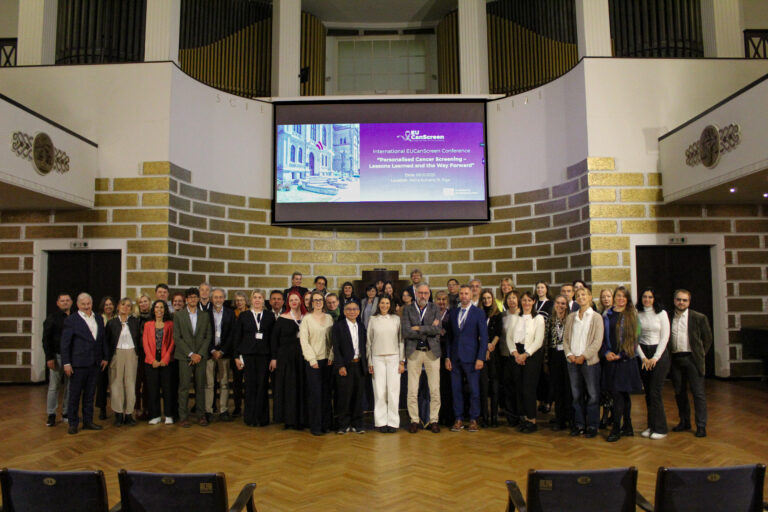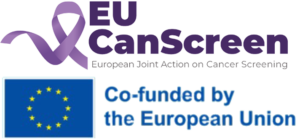Latvia, Riga, 08-10-2025
Towards Smarter, More Precise and More Effective Healthcare – Insights from the Conference on Personalised Cancer Screening in Riga, Latvia

Insights from the Conference on Personalised Cancer Screening in Riga, Latvia
On 8 October, the international conference “Personalised Cancer Screening – Lessons Learned and the Way Forward” took place in Riga, at the University of Latvia (LU). Throughout the day, participants discussed topics such as the ethical and social aspects of personalised screening, as well as risk-based screening models for cervical, breast, colorectal, prostate, lung and gastric cancers.
Paolo Giorgi Rossi from the Local Health Authority of Reggio Emilia (Italy) gave a presentation on the conceptual framework of risk-based approaches to cancer screening. “The EUCanScreen Joint Action aims to implement the 2022 European Commission recommendations on cancer screening. Risk stratification is a central element of these recommendations,” noted Rossi.
Risk stratification in cancer screening involves dividing individuals into risk groups (for example, low, medium, and high) based on personal factors such as age, sex, family medical history, lifestyle, and others. In practice, this means that the screening strategy is tailored to each person’s level of risk – for instance, people at higher risk may be invited to screening earlier or more frequently, while those at lower risk may be screened later or less often.
The aim of this approach is to promote personalised healthcare, ensuring that screening is individually tailored. This can improve early disease detection among those most at risk, reduce unnecessary testing for people at low risk, and make more efficient use of healthcare resources.
Conference sessions also highlighted the latest technological developments, including the use of liquid biopsies, polygenic risk scores (PRS), and the role of artificial intelligence (AI) in cancer screening.
Jessie Gomers, from Radboud University Medical Center (the Netherlands), discussed the application of AI in cancer screening. She emphasised that research shows AI accuracy in mammogram analysis is, on average, comparable to that of radiologists. “AI is no longer just a research topic for cancer detection. It is already implemented in some regions in Sweden and Denmark due to a radiologist shortage,” Gomers explained.
In these regions AI is used in cancer diagnostics in two main ways:
- Decision support – AI highlights potentially malignant areas, while the final decision on further action remains with the radiologist.
- Triage the examination to single or double reading – currently, each screening examination is reviewed by two radiologists, which creates a high workload. By using AI, it is possible to identify high-risk mammograms (which still require double reading) and low-risk ones (which may be reviewed by a single radiologist).
This approach has already shown a significant impact – cancer detection rates have increased, while workload has decreased.
While AI is being integrated into cancer diagnostics, its potential for use within risk-based approaches is also being explored. “I think that in the future AI might be able to predict an individual’s risk of developing cancer within a certain timeframe,” Gomers noted.
The final plenary session addressed the importance of effective communication and citizen engagement in implementing personalised cancer screening programmes across healthcare systems.
Director of the Institute of Clinical and Preventive Medicine at the LU, scientific lead of the Joint Action EUCanScreen, and the conference idea author Marcis Leja notes: “The EUCanScreen Joint Action enabled us to organise this conference dedicated to personalised cancer screening, bringing together leading international experts from both EUCanScreen partner institutions and beyond. Personalised approaches to cancer screening represent our future – and preparation for that future must begin today. The conference provided our specialists not only with the opportunity to follow international developments, but also to establish valuable contacts for future collaborations.”
All 7 conference session videos are available on Youtube: https://www.youtube.com/@eu_canscreen








